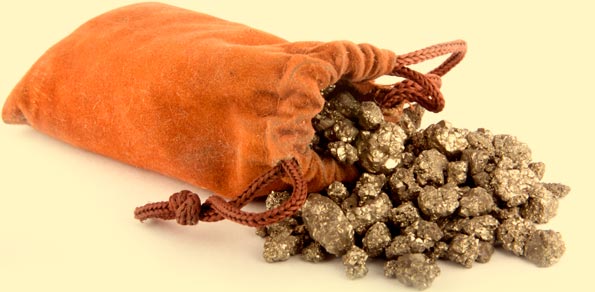The safe haven status of gold appears to have lost it’s shine, whether or not this is a trend, or a temporary loss of faith (as a reversion to the yearly mean takes hold) remains to be seen.
Many analysts and commentators have continued to hold polarised views on the precious metals sector; whilst the flight to gold as a preserve of wealth makes perfect sense, particularly in a financial world still baulking at the Eurozone situation, the gold bug predicted “rise to the moon” value of gold will (it seems) have to wait another year.
The paradigm shift in investment attitude towards gold has been quite remarkable, no longer viewed as a preserve of wealth versus the ravages of inflation the metal became a tangible store of safety for those deeply troubled by the crisis of 2008-2009 and consequently the value spike caused then has been locked in since. Why the sudden collapse in confidence? Well if you have no money to buy gold and have to liquidate assets to pay bills then the value will fall and that scenario is as true for multi billion dollar hedge funds as it is for ‘Joe six pack’ visiting the local pawn brokers..
Bullion’s plunge below its 200-day moving average last week, which it had held for nearly three years, has prompted many prominent market watchers to call an end to gold’s decade-long bull cycle. Gold prices will fall below $1,500 an ounce over the next three months and are unlikely to retest September’s all-time highs until later 2012 at the earliest, according to a Reuters poll of 20 hedge fund managers, economists and traders.
The bleak forecast, coming after gold has lost 11 percent of its value so far this month, is likely to fuel fears that bullion is close to ending its more than decade long bull run and entering a bear market. Almost half of respondents predicted bullion will fall to 1,450 an ounce in the first quarter next year, with three seeing prices as low as $1,400 an ounce.
The forecasts come after a dismal performance last week when prices hit a 2 1/2 month low of $1,560 and gold lost its safe haven status. Selling was fuelled by a scramble by hedge funds for cash to meet client redemptions at the end of a difficult year and a run for cash by European banks seeking to raise capital.
The precious metal is now heading for its first quarterly loss for the fourth quarter after its second-worst rout since September 2008 when the global credit crunch was at its height. In another immediately bearish sign, U.S. Commodity Futures Trading Commission (CFTC) figures released Friday showed that managed money in gold futures and options cut bullish bets for the second consecutive week.
The long-term outlook is no more upbeat either, with more than half of respondents predicting that gold is unlikely to stage another run to new all-time highs until at least the second half of 2012. Four said they don’t expect a new record until at least 2014.
Market Overview
Equities fell for the first time in three days although European markets have subsequently found parity with opening prices, the dollar rose and the won dropped to a two-month low after North Korean leader Kim Jong Il died and as European finance ministers prepare to discuss the region’s debt crisis.
The MSCI All Country World Index slid 0.7 percent at 8:01 a.m. in London, halting a two-day gain, and South Korea’s Kospi index slumped 3.4 percent. Standard & Poor’s 500 Index futures lost 0.2 percent. The dollar climbed 0.3 percent to $1.3012 against the 17-nation euro and rallied 1.4 percent against the South Korean won. Oil declined for a fourth day in New York and copper dipped 1 percent.
The Stoxx Europe 600 Index retreated 0.7 percent and The MSCI Asia Pacific Index dropped 1.9 percent. Australia’s S&P/ASX 200 Index sank 2.4 percent, Japan’s Nikkei 225 Stock Average retreated 1.3 percent and Hong Kong’s Hang Seng Index slipped 1.2 percent.
The euro weakened before regional finance ministers hold a conference call at 3:30 p.m. Brussels time to discuss 200 billion euros of additional funding through the IMF. France is selling bills today after Fitch said on Dec. 16 that the country is more exposed to the region’s debt crisis than other top-rated euro-zone countries because of its budget deficit and government debt burden. Spain will auction government securities tomorrow maturing in three and six months.
Crude for January delivery lost 0.6 percent to $92.95 a barrel on the New York Mercantile Exchange, extending a three- day, 6.6 percent decline. Three-month copper dropped 1 percent to $7,270 a metric ton in London and nickel slipped 1.1 percent to $18,350 a ton. Gold slid 0.3 percent to $1,593.63 an ounce, extending last week’s 6.6 percent slump.
Market snapshot at 10:00 am GMT (UK time)
Asian-Pacific markets sold of in the overnight/early morning session. Naturally the death of the North Korean leader provided instability. The Nikkei closed down 1.26%, the Hang Seng closed down 1.18%, and the CSI closed down 0.24%. The KOSPI index of Korea closed down 3.43%. the ASX 200 closed down 2.38%.
European bourse indices are trading flat or marginally up in the morning session, the STOXX 50 is up 0.04%, the UK FTSE is up 0.01% and the CAC is up 0.01%. The DAX is up 0.09%. The SPX daily equity index future is up 0.38% suggesting a positive open for Wall Street. ICE Brent crude is up $0.22 a barrel at 103.57 Comex gold is down 0.2% at $1597.7.
The dollar strengthened 0.2 percent to $1.3025 per euro as of 8:32 a.m. in London from the close in New York on Dec. 16. The greenback added 0.2 percent to 77.88 yen. Europe’s common currency was little changed at 101.45 yen. The Korean won weakened 1.4 percent to 1,174.80, earlier touching 1,179.95, the weakest level since Oct. 7.





